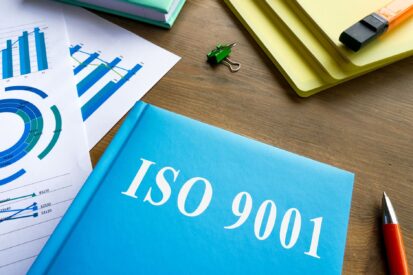In an era where environmental concerns are of utmost importance, organisations must take proactive steps to minimise their ecological footprint and operate sustainably. One effective approach to achieving this is by implementing an ISO 14001 Environmental Management System (EMS). In this article, we will explore the benefits of adopting an ISO 14001 EMS, discussing its key components and examining how it can contribute to the long-term growth and success of your organisation.
ISO 14001 is a globally recognised standard for Environmental Management Systems, providing a structured framework for organisations to manage and reduce their environmental impact effectively. By implementing an EMS in line with ISO 14001, organisations can demonstrate their commitment to environmental responsibility, opening up opportunities for sustainable growth, attracting socially conscious customers, and avoiding penalties resulting from non-compliance with environmental regulations.
At ISO 9001 Consultants , our experienced team is passionate about assisting organisations across Australia in implementing and maintaining effective Environmental Management Systems. In this comprehensive guide, we will delve into the essential components of the ISO 14001 standard and explain the practical steps your organisation can take to implement a robust EMS and navigate today’s complex environmental landscape. By understanding ISO 14001’s requirements, your organisation can proactively improve its environmental performance and achieve sustainable growth with lasting benefits, demonstrating your company’s dedication to a greener future.
Key Components of an ISO 14001 Environmental Management System
1. Environmental Policy and Objectives
Developing an environmental policy and setting clear, measurable objectives is a fundamental component of an ISO 14001 compliant EMS. Your organisation’s environmental policy should outline your commitment to minimising environmental impacts, complying with relevant legal and regulatory requirements, and continually improving your environmental performance. Establishing objectives aligned with your policy enables your organisation to set targets for performance improvement, focusing on areas that require the most attention.
2. Environmental Aspects and Risk Assessment
An essential part of implementing an ISO 14001 EMS involves identifying and evaluating the environmental aspects of your organisation’s operations, products, and services. This process includes determining the aspects with significant environmental impacts, assessing potential risks, and prioritising actions to mitigate these risks. By addressing your organisation’s most pressing environmental challenges, your EMS becomes more targeted, effective, and efficient.
3. Legal and Regulatory Compliance
Maintaining compliance with relevant legal and regulatory requirements is critical to the success of your EMS and your organisation’s reputation. An ISO 14001 EMS includes procedures for identifying applicable environmental laws and regulations, ensuring that your organisation remains compliant and up to date with any changes in requirements. Regular reviews of your compliance status can help minimise the risk of fines, penalties, and negative publicity resulting from non-compliance.
4. Continual Improvement and Monitoring
ISO 14001 emphasises the principle of continual improvement, requiring your organisation to monitor, measure, and improve its environmental performance proactively. This includes conducting regular internal audits, management reviews, and implementing corrective actions to address any deficiencies or non-conformities. Continual improvement fosters a culture of ongoing progress and adaptation, ensuring that your EMS remains responsive to evolving environmental challenges and requirements.
Implementing an ISO 14001 Environmental Management System: Practical Steps
1. Obtain Management Commitment
The full commitment of senior management is critical to the success of your EMS. Management’s support and involvement in the EMS ensure that the necessary resources, guidance, and authority are in place to drive improvements in your organisation’s environmental performance.
2. Assign Responsibility and Authority
Designate individuals within your organisation to take responsibility for developing, implementing, and maintaining your EMS. These individuals should have the necessary knowledge and authority to drive improvements in environmental performance and ensure that all employees engage with and follow the EMS.
3. Develop an Implementation Roadmap
Create a structured plan of action for implementing your ISO 14001 EMS, including the scope, objectives, key milestones, timelines, and resources required. Regularly review the progress of your implementation project to ensure that objectives are being met, and adjust your roadmap as needed to address any challenges or changes in priorities.
4. Establish Monitoring and Measurement Processes
Implement processes for monitoring and measuring your organisation’s environmental performance, capturing relevant data, and identifying trends. These monitoring processes should reflect your defined objectives, enabling you to track progress, identify areas for improvement, and take corrective actions as needed.
5. Conduct Internal Audits and Management Reviews
Internal audits and management reviews are essential for evaluating the effectiveness of your EMS and ensuring its continual improvement. Perform regular audits across various aspects of your organisation’s operations, identifying areas of non-conformance, and implementing corrective actions. Management reviews can provide valuable insights into the overall effectiveness of your EMS and offer strategic guidance for further improvement.
Realising the Benefits of ISO 14001 for Sustainable Growth
Implementing an ISO 14001 Environmental Management System can help your organisation achieve sustainable growth by minimising environmental impacts, meeting legal and regulatory requirements, and demonstrating your commitment to environmental responsibility. The successful implementation and maintenance of an EMS provide a range of benefits, including cost savings through resource optimisation, enhanced brand reputation, and increased access to environmentally conscious customers and markets.
At ISO 9001 Consultants, our team of professionals is dedicated to supporting organisations across Australia in achieving and maintaining ISO 14001 certification. Contact us today to learn more about our ISO consultancy services and how we can help your organisation implement a robust Environmental Management System that drives sustainable growth and long-term success.








Users Comments
Get a
Quote